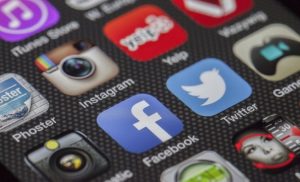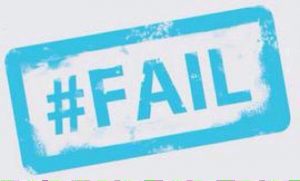It’s a safe assumption that if you are reading this blog, you’re using social media in some way to grow your business. Maybe you’re building a brand for your website or sharing inspiration to engage your community online.
But what if you are creating an event offline? Can social media help you drive face-to-face engagement as well? Absolutely.
Whether you’re planning an in-store concert, an author talk, or a huge end-of-season sale, social media is one of the most effective and affordable ways to get the word out. Keep in mind, your customers’ Facebook and Twitter feeds are already packed with ads, and their email inboxes are full of promotions. You need to make sure your message will get their attention if you expect them to clear their calendar and turn up in real life.
Experts say focusing on visuals and trimming text to its essence is the key. Our brains process visuals 60,000 times faster than text according to Tom More, founder of Slidely, a web-based tool for creating slideshows, videos, and imagery. So it’s no wonder company Facebook pages that feature visuals like videos and photo albums drive 180 percent more engagement than those without strong visual content, according to research from OpenView Marketing Lab.
But not just any video or photo collage will cut through the clutter on social media. Here are six tips for using social media to help draw people to almost any type of in person event.
1. Make sure the picture is worth a thousand words because you want to use as few actual words as possible.

“The photo needs to speak to the event and the text needs to be very brief,” says Tiana Gustafson, founder of Firefly Media, which offers website and social media design, development, and marketing services.
When choosing an image, it makes sense to feature the performer for posts promoting in-store entertainment. For sales or other in-store events, consider images highlighting hot items and happy customers.
2. Don’t try to give all the details in the text of the post.

Provided by provided by Erin Steep at @RandFSTL
Create image-driven posts and keep text to a minimum; include only the essential details like the date time and place. “Then use a link to provide more information,” Gustafson says.
3. Splurge on images.

From Death to the Stock Photo — A stock image website that provides quality free photos for commercial use.
If you can’t afford high-quality original photos, consider paying for compelling stock photography rather than relying on free resources. Shutterstock has a basic plan that offers five photos for $ 49, which is more than worth it since a high-quality picture can carry an ad.
And, if you want to take visuals to the next level, there are also plenty of tools to help you create your own infographics, videos, and memes.
4. Choose search-friendly hashtags that make the event easy to find through social media search engines.

From Instagram.com/splashstl
“You definitely want to utilize at least three hashtags,” Gustafson says.
One of those hashtags should be location specific. It’s also worth taking some time to study which hashtags are most effective for the type of event you are trying to tout. You can use search and explore features like those now provided by Instagram to test possible hashtags. For example, are similar events in St. Louis more likely to pop up on your Twitter feed if you use #STL or is #StLouis a better bet?
5. Know the rules for ads or promoted posts.

From Facebook Grid Tool Tutorial
The visual needs to say a lot, but not necessarily through text embedded in the image itself. In fact, Facebook requires that its ad images include no more than 20 percent text.
6. Outline the incentives for attending.
If attendees are getting the chance to see new merchandise first or attend an intimate in-store performance with an exclusive audience, let them know, Gustafson advises.
“Tell people what they are going to gain from doing this.”
Try these tips for yourself when you’re planning and promoting your next in-store event and share what worked for you.
(123)







